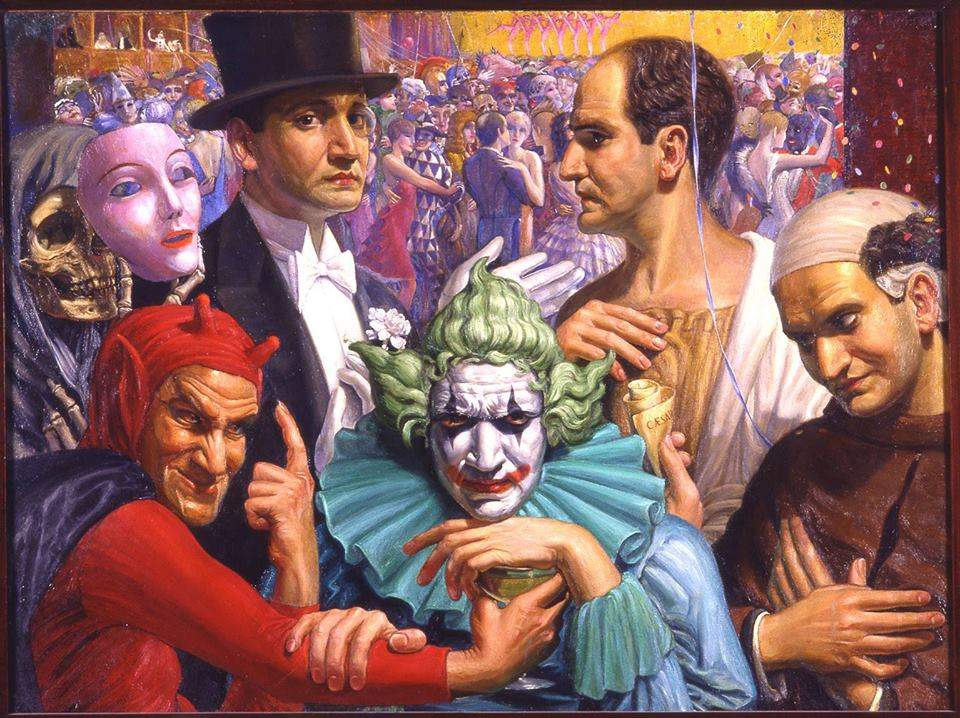Trieste celebrates one hundred and thirty years since the birth of painter Cesare Sofianopulo with an exhibition
This year marks one hundred and thirty years since the birth of Cesare Sofianopulo (Trieste, 1889 - 1968), painter and man of letters, a character of refined culture and surprising originality, “Byzantine soul of modern Greek” (Arduino Berlam). Here are his main formative stages, in many respects similar to most Trieste artists, but basic for understanding the specificity of his artistic language: after his formative beginnings in the retinue of Argio Orell, whom he attended from 1908, between 1910 and 1913 he studied at theMunich Academy with Angelo Yank, then in Paris in 1911 at theAcadémie Julian, a pupil of Jean Paul Laurens, and again throughout 1913 at the Bavarian academy, where he was admitted to the teachings of the Munich Secession protagonist Franz von Stuck.
Referring to the rigorous and intense portraiture of the famous Greek-born painter from Trieste, Salvatore Sibilia expressed himself in these words in 1922 : “The portrait, for Cesare Sofianopulo, must be the symbol of the person, the symbol of a soul, potentially complete: the synthesis of all feelings, the sum of all the various mutable aspects of a specific character. [...]”.
In addition to distinguishing himself for his refined artistic skills, Cesare Sofianopulo, even today, is remembered for his characteristics as an all-round intellectual and ’sociologist’. Devoted to literary reflection, poetry, and the activity of translator, the artist was perfectly immersed in the reality of his world as a “diligent investigator of civic affairs,” in the name of which he constantly engaged himself by intervening, with insightful and sometimes lashing language, in almost thirty Trieste and regional newspapers. This journalistic aptitude was an expression of his highly sensitive civic engagement, which, during the first half of the twentieth century, not only extended to irredentist issues and the historical phases of Trieste’s tormented transition to national territory, but also systematically turned to the daily happenings of his city, as well as to the artistic debate of his time.
Cesare Sofianopulo’s best-known painting in the Museo Revoltella’s collections, with a title as complex as its metaphysical content, Autoritratto bifronte(Dualistic or Pirandellian Self-Portrait/My Reflection), is paradigmatic of the feverish psychological tension through which the artist expressed himself for the affirmation of a principle, for the circumscription of a value, which he deeply supported and coveted. The work, which can be ascribed to 1936, represents the artist’s concrete protest to the boarding up of the final stretch of the canal on which, until 1934, the church of Sant’Antonio Nuovo overlooked.
To the modernity of thought of Cesare Sofianopulo, to whose fighting and heroic spirit his Hellenic origin undoubtedly also contributed, and to the one hundred and thirty years since his birth, is dedicated the new layout of the ground-floor room of the Gallery of Modern Art.
The exhibition, which will be open to visitors from November 16, 2019, to January 12, 2020, and which brings together the six works owned by Museo Revoltella, also represents an important opportunity to present to the public for the first time the five works granted to the museum on loan for use by the Sofianopulo family. The relevant concession, recently sanctioned, will be a significant opportunity for everyone to learn more about the figure and work of this illustrious fellow citizen of ours.
For all information you can call +39 040 6754350, send an e-mail to biglietteriarevoltella@comune.trieste.it or visit the official website of the Revoltella Museum.
Pictured: Cesare Sofianopulo, Masks (1930; Trieste, Museo Revoltella)
Source: press release
 |
| Trieste celebrates one hundred and thirty years since the birth of painter Cesare Sofianopulo with an exhibition |
Warning: the translation into English of the original Italian article was created using automatic tools. We undertake to review all articles, but we do not guarantee the total absence of inaccuracies in the translation due to the program. You can find the original by clicking on the ITA button. If you find any mistake,please contact us.





























